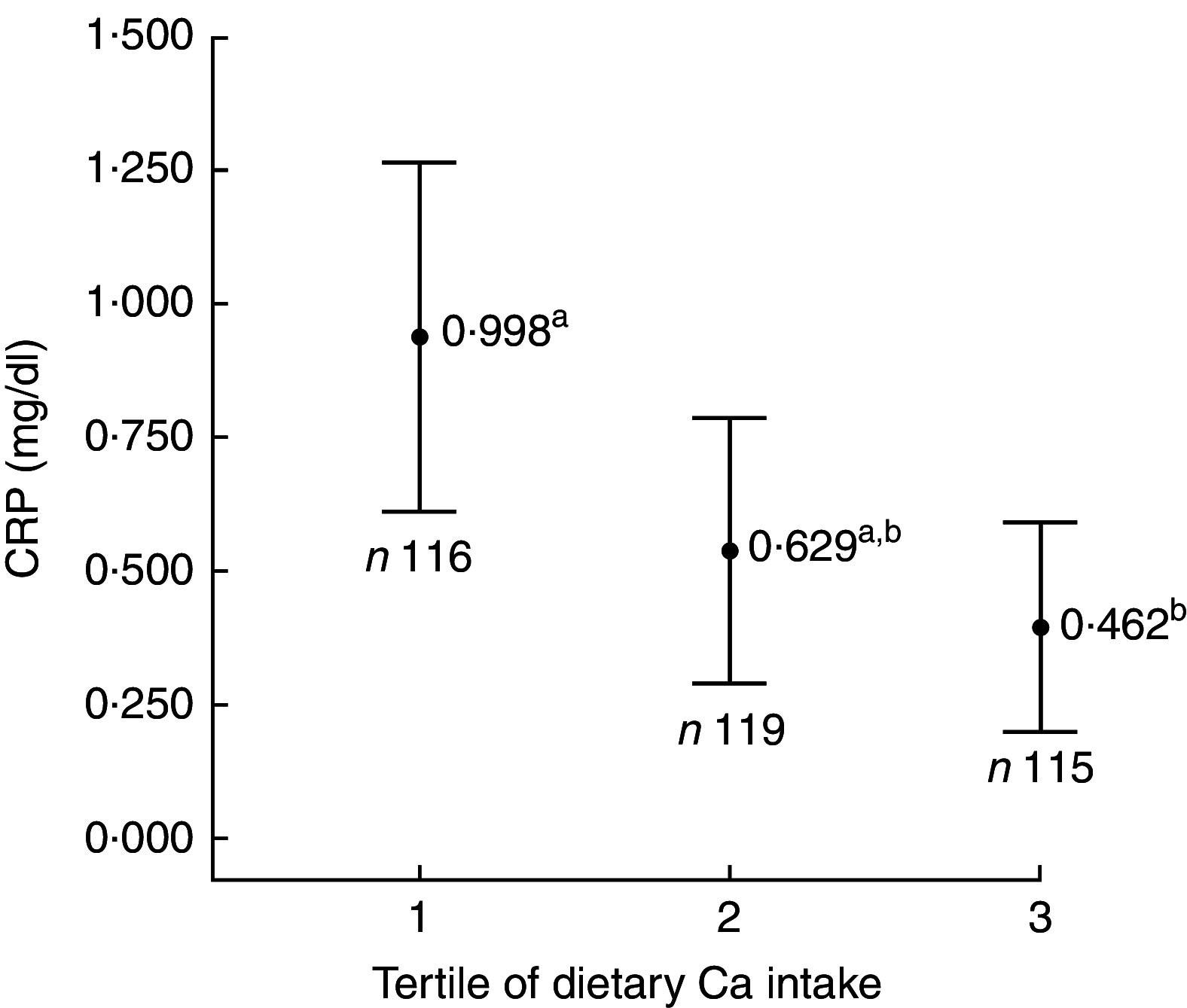Inverse association of calcium intake with abdominal adiposity and C-reactive protein in Brazilian children
- PMID: 29506595
- PMCID: PMC10260829
- DOI: 10.1017/S136898001800023X
Inverse association of calcium intake with abdominal adiposity and C-reactive protein in Brazilian children
Abstract
Objective: To evaluate Ca intake and its association with cardiometabolic risk factors during childhood.
Design: A cross-sectional study with a representative sample. Food consumption was assessed through three 24 h dietary recalls. Anthropometry, body composition and biochemical measurements were also conducted.
Setting: Viçosa, Minas Gerais, Brazil.
Subjects: Children between 8 and 9 years old (n 350) enrolled in public and private schools in the urban area of the municipality of Viçosa.
Results: Almost all children had inadequate intake of Ca (97·4 %), especially those with low income, non-white and who studied in public schools. Foods that contributed most to Ca intake were 'milk' and 'cheeses and yoghurts' (R 2=0·66 and 0·13, respectively), and intake of 'milk' was correlated with 'chocolate milk powder' intake (r=0·538, P<0·01). Children with lower Ca intake had a higher prevalence of increased C-reactive protein (prevalence ratio=2·93; 95 % CI 1·21, 7·07), increased waist circumference (prevalence ratio=2·86; 95 % CI 1·01, 8·13) and a lower prevalence of high LDL cholesterol (prevalence ratio=0·64; 95 % CI 0·41, 0·99).
Conclusions: Lower Ca intake was associated with excess abdominal adiposity and subclinical inflammation in Brazilian children. Monitoring of adequate Ca intake is important, especially in poorer communities.
Keywords: Child; Food consumption; Inflammation; Nutritional epidemiology; Obesity.
Figures

References
-
- Damsgaard CT, Dalskov S, Laursen RP et al.. (2014) Provision of healthy school meals does not affect the metabolic syndrome score in 8–11-year-old children, but reduces cardiometabolic risk markers despite increasing waist circumference. Br J Nutr 112, 1826–1836. - PubMed
-
- Wang Y & Lobstein T (2006) Worldwide trends in childhood overweight and obesity. Int J Pediatr Obes 1, 11–25. - PubMed
-
- Freedman DS, Khan LK, Serdula MK et al.. (2005) The relation of childhood BMI to adult adiposity: the Bogalusa Heart Study. Pediatrics 115, 22–27. - PubMed
-
- Zemel MB & Sun X (2008) Dietary calcium and dairy products modulate oxidative and inflammatory stress in mice and humans. J Nutr 138, 1047–1052. - PubMed
Publication types
MeSH terms
Substances
LinkOut - more resources
Full Text Sources
Other Literature Sources
Research Materials

